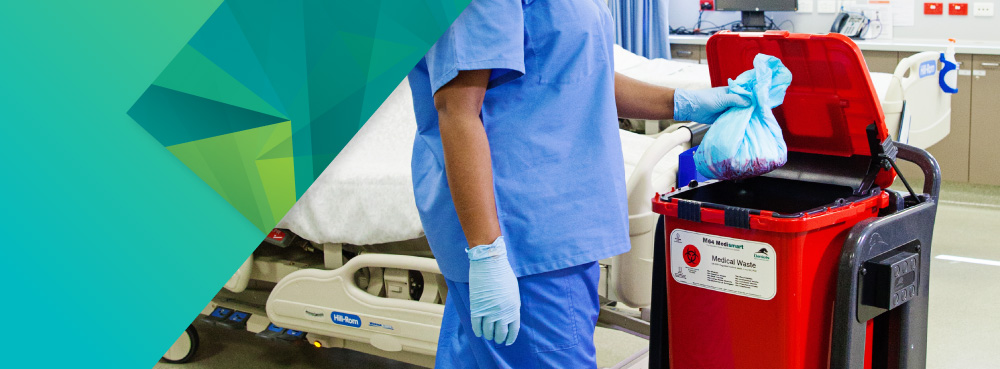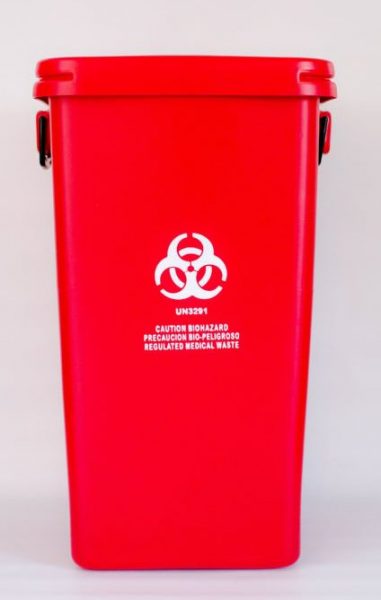Your Trusted Partner: Medical Waste Removal Services Tailored to Your Needs
Your Trusted Partner: Medical Waste Removal Services Tailored to Your Needs
Blog Article
Stay Ahead of Laws: Specialist Suggestions on Medical Garbage Disposal
In a globe where the health care industry is frequently developing, it is vital for medical facilities to remain ahead of regulations when it comes to the correct disposal of clinical waste. From comprehending the different categories of clinical waste to executing the right collection and partition approaches, this discussion will certainly supply workable tips and beneficial insights to aid facilities remain in advance of policies in the ever-changing landscape of clinical waste disposal.
Comprehending Clinical Waste Categories
Recognizing clinical waste categories is necessary for proper disposal and monitoring in healthcare facilities. Clinical waste refers to any kind of waste produced by medical care tasks that might pose a danger to public health or the atmosphere. It is crucial to categorize clinical waste accurately to ensure its secure handling, therapy, disposal, and transport.
There are numerous categories of medical waste that health care centers need to be acquainted with. One of the most usual categories consist of infectious waste, pathological waste, sharps waste, pharmaceutical waste, and chemical waste. Each category has certain standards and laws for its appropriate monitoring and disposal.
Pathological waste refers to human cells, organs, or body parts that require unique handling and disposal. Drug waste makes up ended, extra, or polluted medications that need careful handling and disposal.
Staying Up-To-Date With Regulatory Changes
Staying current with governing adjustments is crucial for medical care centers to ensure conformity and correct monitoring of clinical waste disposal. medical waste removal near me. With laws frequently progressing, it is necessary for health care facilities to remain current to stay clear of charges, fines, and possible injury to the setting and public health and wellness
To stay in advance of regulative changes, medical care centers ought to establish a system for tracking and tracking updates. This can be done by registering for regulatory e-newsletters, going to conferences and workshops, and proactively joining market associations. In addition, facilities ought to mark a team member or team liable for staying educated and distributing information to appropriate stakeholders.
Regular interaction with regulatory companies is also crucial. Health care facilities ought to develop connections with neighborhood, state, and federal firms to guarantee they recognize any type of changes in guidelines that might impact their waste management methods. This can be done via regular meetings, involvement in public remark periods, and positive involvement with regulatory companies.
Additionally, medical care facilities should think about partnering with waste management firms that focus on clinical waste disposal (medical waste disposal services with WasteX). These firms are usually skilled in the most recent laws and can provide assistance and support to ensure conformity
Implementing Appropriate Collection and Partition Approaches
To effectively manage medical waste disposal, health care facilities must establish appropriate collection and segregation techniques in accordance with regulatory guidelines. Applying these approaches makes certain the secure handling and disposal of potentially harmful materials, shields the environment, and lessens the threat of injuries and infections to medical care workers and the public.
Proper collection and segregation approaches entail making use of assigned containers and identifying systems. Health care facilities must provide plainly classified containers for different kinds of medical waste, such as sharps, contagious waste, pharmaceutical waste, and non-hazardous waste. These containers ought to be color-coded and clearly significant to prevent confusion and promote very easy recognition.
Furthermore, health care centers need to train see it here their staff on the correct treatments for gathering and segregating clinical waste. This includes educating them on the different sorts of waste, the appropriate containers to make use of, and the value of following standards and policies. Routine training sessions and refresher training courses ought to be performed to make sure that personnel stay current on finest practices.
Moreover, healthcare centers ought to develop a system for regular collection and disposal of clinical waste. This may include partnering with accredited waste administration firms that focus on clinical waste disposal. These companies will ensure that the gathered waste is transported and taken care of in compliance with regulative requirements.
Picking the Right Disposal Methods

Incineration is just one of one of the most efficient and typical techniques for disposing of certain types of medical waste, such as pathological waste and sharps. It includes the regulated burning of waste at high temperature levels, lowering it to ash. Nonetheless, incineration site here can launch dangerous toxins right into the air and add to air contamination.

Various other disposal techniques consist of chemical treatment, microwave therapy, and landfilling. Chemical therapy involves using chemicals to counteract the waste and disinfect. Microwave therapy utilizes microwave energy to warmth and disinfect the waste. Landfilling entails burying the waste in a marked landfill location (medical waste disposal services with WasteX). Nonetheless, landfilling should be the last resort because of the possible risk of contamination to soil and groundwater.
Ensuring Conformity Via Documentation and Training
After carefully thinking about the appropriate disposal methods for medical waste, healthcare facilities need to guarantee compliance with regulations and minimize environmental influence by implementing reliable documents and training treatments. This step is important in preserving a risk-free and sustainable setting for both health care employees and the general public.

Training is similarly vital in making certain compliance with guidelines. Medical care workers who deal with clinical waste must obtain suitable training on waste segregation, taking care of, and disposal procedures. This training must cover subjects such as the correct use personal protective tools, recognition of various kinds of waste, and the right disposal techniques for each and every waste group. By providing extensive training, health care centers can empower their team to make informed decisions and reduce the danger of incorrect waste disposal.
Conclusion
To conclude, staying ahead of policies in medical waste disposal is essential for healthcare facilities. medical waste removal service. Comprehending the various categories of clinical waste, remaining updated with regulatory adjustments, applying correct collection and partition techniques, choosing the ideal disposal approaches, and making sure compliance via documentation and training are all essential steps. By adhering to these standards, healthcare companies can successfully handle and dispose of medical waste in a secure and accountable way
From understanding the various classifications of clinical waste to executing the right collection and partition methods, this conversation will give actionable pointers and important understandings to assist centers stay in advance of regulations in the ever-changing landscape of clinical waste disposal. - medical waste disposal services with WasteX
The most typical groups consist of infectious waste, pathological waste, sharps waste, pharmaceutical waste, and chemical waste. Healthcare facilities ought to supply plainly identified containers for different kinds of clinical waste, such as sharps, infectious waste, pharmaceutical waste, and non-hazardous waste. Health care facilities must develop a thorough system to videotape and track all facets of clinical waste disposal, including kinds of waste generated, amounts, and disposal approaches made use of. Medical care employees who deal with medical waste must receive suitable training on waste segregation, dealing with, and disposal procedures.
Report this page